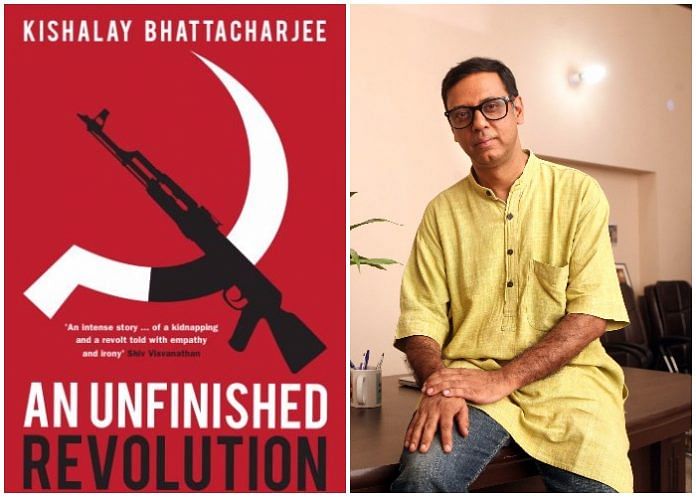Kishalay Bhattacharjee’s book addresses age-old questions, and extracts startling admissions from the Maoist leadership about the degeneration of the movement.
Are all Maoists Adivasis? Are Adivasis synonymous with the Naxal movement? What is the Adivasi-Maoist relationship? Are Maoists acting as opportunists, using Adivasis as a support base to sustain their movement, or are they really fighting for their cause?
‘An Unfinished Revolution’ by Kishalay Bhattacharjee is a sharp take on these questions. It explains the Adivasi-Maoist relationship and how it evolved over the years. It traces the first revolt by the Santhals, a politicised peasantry, which eventually gave way to Naxalism.
The book begins with the experiences of a journalist covering the 2012 hostage crisis when two Italians — Paulo Bosusco and Claudio Colangelo — were abducted by the CPI (Maoist) group in Kandhamal. It provides a peek into the tribal world and how the Maoists operate, shattering stereotypes at the same time.
The book highlights the conflicts within the party, its failures, how the movement has lost moral and physical ground, and how the tribal people in these areas are caught between the Naxals and the police.
The story of the revolt is not only told through the author’s experiences, but also the parties involved, including, a detailed account by Claudio Colangelo on his abduction, explaining how well he was treated by the Maoists and their commander.
Trekking through the malaria-infested jungles for days, the author is finally able to interview CPI (Maoist) commander Sabyasachi Panda, who admits that the leaders have moved away from the ideology to make money and confesses the party system “has degenerated into a feudal democracy”. His honest confession that the system needs to change for the movement sustain makes for an engaging read.
Though certain descriptions become tedious and dull after a point, the author explains how the Naxal movement is often entwined with Adivasi resistance, while the two are actually different. The two issues of Left-wing extremism and Adivasi rights are distinct, and “it is a huge error to mix them up”, the author writes.
Bhattacharjee claims that there is no database on how many Adivasis were actually part of the revolution that started from Naxalbari. The Santhals participated in Naxal activities only because the Naxal ideology was in accord with their traditional values and ultimate goals. However, the Naxalites may have utilised them to sustain their movement.
The author believes that the Adivasis are just fighting to defend their resources, their forests, and not for power like the Maoists. The book reveals that in the case of the Maoists, the leadership is upper-class Hindus, whereas the fighting force is from the Adivasi tribal population.
If most comrades are joining the establishment, others are being killed in encounters, and the commanders are complaining of a feudal setup, then what are they really fighting for? Bhattacharjee’s book keeps the reader thinking.



